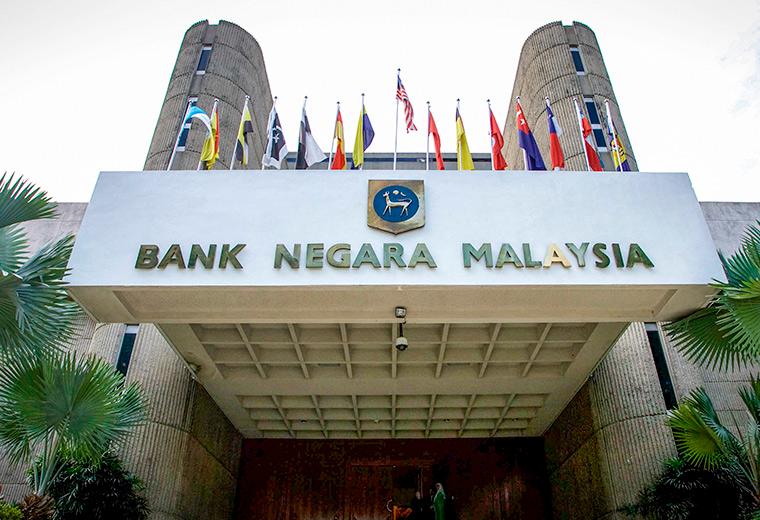PETALING JAYA: Bank Negara Malaysia’s (BNM) Monetary Policy Committee has retained the Overnight Policy Rate (OPR) at 1.75%, citing the recovery in the global economy led by improvements in manufacturing and export activity.
However, it noted that the recent resurgence in Covid-19 cases and subsequent containment measures have affected activity in several major economies.
“The expedited rollout of mass vaccination programmes, together with ongoing policy support, is expected to lift global growth prospects going forward. Financial conditions also remain supportive,” the committee said in a statement.
It said the overall outlook remains subject to downside risks, primarily if there is further resurgence of infections and delays in mass inoculation against the pandemic.
For Malaysia, the central bank said the resurgence of cases and the introduction of targeted containment measures have affected the recovery momentum in the final quarter of last year. As a result, growth for 2020 is expected to be near the lower end of the earlier forecast range.
Similarly, it foresees near-term growth for 2021 will be affected by the reintroduction of stricter containment measures, although the impact will be less severe than that experienced last year.
The committee stated that the growth trajectory is projected to improve from the second quarter onwards, driven by the recovery in global demand, turnaround in public and private sector expenditure amid continued support from policy measures, and higher production from existing and new manufacturing and mining facilities.
Furthermore, the rollout of vaccines in the coming months will lift sentiments.
“Downside risks to the outlook remain, stemming mainly from ongoing uncertainties surrounding the dynamics of the pandemic and potential challenges that might affect the rollout of vaccines both globally and domestically,” it said.
In line with earlier assessments, the central bank expects average headline inflation to be negative in 2020 due mainly to substantially lower global oil prices. Meanwhile, the headline inflation is projected to average higher this year, primarily due to higher global oil prices.
BNM noted that the underlying inflation is expected to remain subdued amid continued spare capacity in the economy. “The outlook, however, is subject to global oil and commodity price developments.”
In a separate statement, the central bank said the statutory reserve requirement (SRR) ratio remains unchanged at 2%. However, it is extending the flexibility for banking institutions to use Malaysian Government Securities and Malaysian Government Investment Issues (MGS and MGII) to meet the SRR compliance until Dec 31, 2022.
“The decision to extend this flexibility is part of Bank Negara Malaysia’s continuous efforts to ensure sufficient liquidity to support financial intermediation activity,” it said.
Since March 2020, the reduction in the SRR ratio by 100 basis points and flexibility to recognise MGS and MGII as part of SRR compliance have released approximately RM46 billion worth of liquidity into the banking system.
In a note, OCBC Treasury Research said that against the backdrop of an economic outlook that remains rather upbeat despite the changing circumstances, it does not look like BNM is in a hurry to cut rates just yet.
“We are less assured than the central bank may be, in how growth rate can pick up all that effortlessly in Q2 on the back of mass vaccination efforts, however.
“The apparent baseline assumption of a smooth rollout of vaccines both globally and domestically – and how this might naturally lead to a steady growth uptick may come to be tested, as well,” it said.
OCBC said the downside risks that the central bank highlighted, namely the ongoing uncertainties surrounding the dynamics of the pandemic and potential challenges that might affect the rollout of vaccines both globally and domestically, are well warranted.
“A recovery is coming, indeed, and in large part driven by the start of vaccination efforts especially in major economies. But we see the ongoing challenges of case resurgence hurting things more – even if a lot less than in 2020 – and we have probably attached a lower probability of a smooth vaccine rollout,” it said.
Overall, it still sees a further easing in the OPR by BNM, likely in the second quarter.
Meanwhile, Centre for Market Education Dr Carmelo Ferlito applauded BNM for keeping the policy rate at its current level, opining that a further cut may have pushed inflationary tendencies.
“In fact, from the inflation perspective, at the moment we experience contending trends: the Covid-19 crisis pushes for prices to go down, while the different fiscal stimuli push in the opposite direction. If inflationary tendencies would prevail, purchasing power would be compromised during an already difficult moment. On the contrary, now we need purchasing power to be restored and savings to be rebuilt in order to grant the creation of funds available for investment,” he said in a statement.
He added that at its present level, it would be unlikely that a further cut could make a significant difference in attracting more investments.
“You see, the cut is a signal and its consequences depend very much on how this signal is interpreted by market players. If it is interpreted as a signal of nervousness, then investors will remain on ‘wait and see’. Not to mention that too low an OPR could eventually incentivise malinvestment (bad investments), because investments are done than would not be done in different circumstances.”















